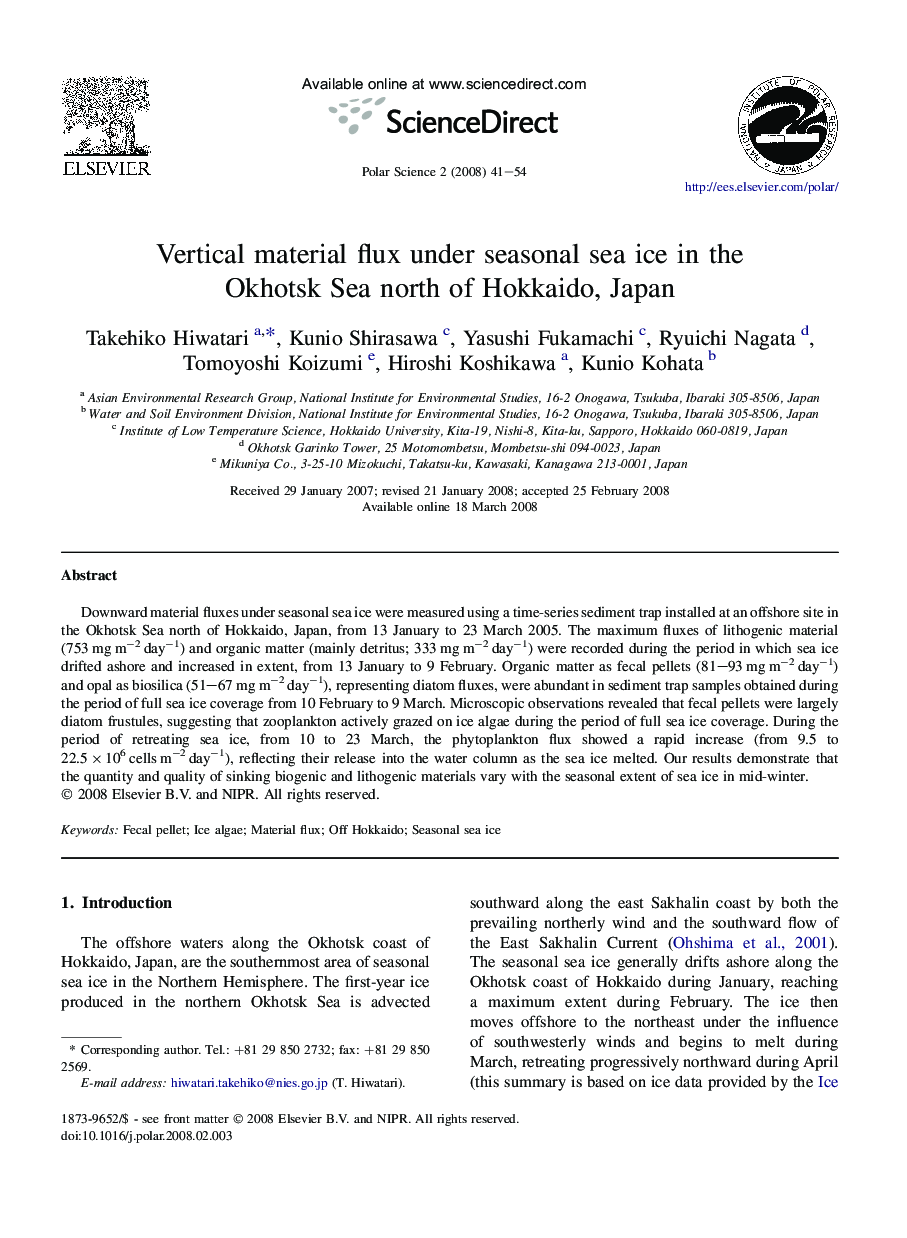| Article ID | Journal | Published Year | Pages | File Type |
|---|---|---|---|---|
| 4683359 | Polar Science | 2008 | 14 Pages |
Downward material fluxes under seasonal sea ice were measured using a time-series sediment trap installed at an offshore site in the Okhotsk Sea north of Hokkaido, Japan, from 13 January to 23 March 2005. The maximum fluxes of lithogenic material (753 mg m−2 day−1) and organic matter (mainly detritus; 333 mg m−2 day−1) were recorded during the period in which sea ice drifted ashore and increased in extent, from 13 January to 9 February. Organic matter as fecal pellets (81–93 mg m−2 day−1) and opal as biosilica (51–67 mg m−2 day−1), representing diatom fluxes, were abundant in sediment trap samples obtained during the period of full sea ice coverage from 10 February to 9 March. Microscopic observations revealed that fecal pellets were largely diatom frustules, suggesting that zooplankton actively grazed on ice algae during the period of full sea ice coverage. During the period of retreating sea ice, from 10 to 23 March, the phytoplankton flux showed a rapid increase (from 9.5 to 22.5 × 106 cells m−2 day−1), reflecting their release into the water column as the sea ice melted. Our results demonstrate that the quantity and quality of sinking biogenic and lithogenic materials vary with the seasonal extent of sea ice in mid-winter.
